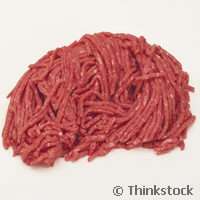High-tech answer to fat analysis in meat industry

For decades, the meat industry has made good use of laboratory analysis. Now the focus is shifting to rapid analytical methods on the production floor and meat producers are perhaps spoilt for choice in terms of rapid analytical options. But which is the right solution for that all important parameter - fat?
A new EU-funded project may have the answer. The TRIMSCAN project, launched in Parma in January, hopes to develop analytical solutions for manufacturers of ground meat-based products. The aim, basically, is that this will be capable of scanning through the meat and assessing fat content.
TRIMSCAN aims to help SME meat processors become more competitive by using automatic in-line fat analysis in meat trimmings.
It is well-known that cutting fat content is one of the most pressing challenges facing the meat industry. This is important for manufacturers of raw meat, that is, at cutting and boning plants, as well as for manufacturers of processed meat products. A number of technologies for rapid fat analysis are already available, each with certain advantages and disadvantages.
Many meat processed products like hamburgers and sausages, including fresh sausages, cooked or smoked sausages, for example, frankfurters and dry-cured sausages such as salami and chorizo are produced from meat trimmings mainly from pork or beef or from a mixture of both. Europe is a major meat producer and the EU accounts for over 16% of global meat production.
What is known as a 'pre-classified' process exists in order to determine the amount of fat in a product with different lean/fat ratios. In some slaughterhouses this is traditionally carried out by experienced and trained operators who manually select the meat from different parts of the pig or beef carcass to achieve the desired fat content.
Fat content in 'pre-classified' meat trimmings can have a variation of plus/minus 5% but even with carcass classification and employees with long experience, large differences in fat levels cannot be avoided.
The main goal of the TRIMSCAN project is to investigate the use of a contactless technology for in-line fat analysis with accuracy better than 1.5%. The scheme will provide SME processors and slaughterhouses with a practical tool at an affordable price to make them more competitive by reducing expensive lean meat over-use by at least 2% and avoiding the need for time consuming sampling.
Silvia Padovan, of TRIMSCAN, said, 'In meat processing, the control of fat in meat trimmings is vitally important to ensure both homogeneity and quality of the final product. It is also desirable to reduce the lean meat over-use, to comply with legislation and meet customer specifications. Large fat variations produce substantial economic losses and a number of industrial problems.'
Excessive salt content, poor texture, hard surface, appearance and odour and product spoilage are the most common quality problems while industrial issues can include manual sampling, recipe adjustment, poor binding capacity and problems during slicing of the product.
Barcelona-based Padovan adds, 'TRIMSCAN will substantially improve and simplify the production processes. It represents a real business opportunity for the SMEs of the sector.'
Provided by CORDIS


















